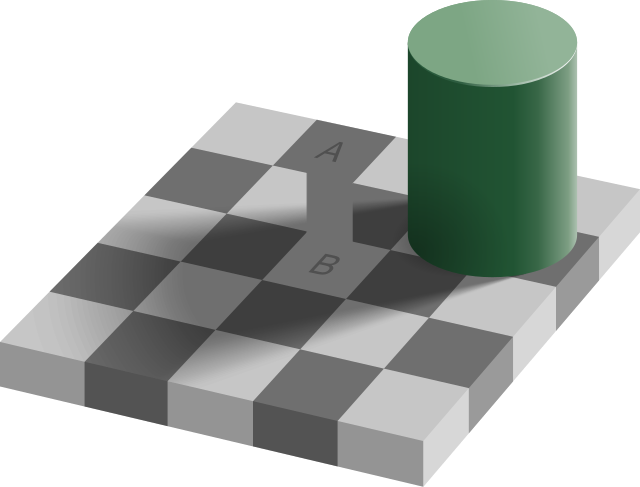Checker shadow illusion
Optical illusion From Wikipedia, the free encyclopedia
The checker shadow illusion is an optical illusion published by Edward H. Adelson, professor of vision science at MIT, in 1995.[1]


Description
The image depicts a checkerboard with light and dark squares, partly shadowed by another object. The optical illusion is that the area labeled A appears to be a darker color than the area labeled B. However, within the context of the two-dimensional image, they are of identical brightness, i.e., they would be printed with identical mixtures of ink, or displayed on a screen with pixels of identical color.[1]
Related illusions
While being one of the most well-known contrast illusions, there are similar effects which cause two regions of identical color to appear differently depending on context:
- The Cornsweet illusion creates a boundary between two identically-shaded regions with a discontinuous gradient, resulting in the opposing sides appearing to be different.
- The Chubb illusion evokes this effect by surrounding zones with others of different, distinct shades, with the relative brightness or darkness of the surrounded area appearing different.
- An illusion closely related to the checker shadow illusion, which also relies on using implied visual shadows to seemingly darken a brighter region to the same color as a well-lit dark region, involves two squares placed at an angle, with the darker square being lit and the lighter square at an angle which receives poor light.[2]
See also
References
External links
Wikiwand - on
Seamless Wikipedia browsing. On steroids.
